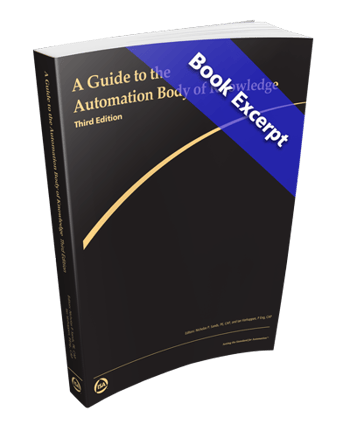AutoQuiz is edited by Joel Don, ISA's social media community manager.
This automation industry quiz question comes from the ISA Certified Automation Professional (CAP) certification program. ISA CAP certification provides a non-biased, third-party, objective assessment and confirmation of an automation professional's skills. The CAP exam is focused on direction, definition, design, development/application, deployment, documentation, and support of systems, software, and equipment used in control systems, manufacturing information systems, systems integration, and operational consulting. Click this link for more information about the CAP program.
As a liquid flows through the restriction of the control valve trim, the pressure drops and then recovers to a fraction (<1.0) of the upstream pressure. A common problem in the application of control valves is cavitation, which can cause surface damage to the wetted surfaces of the control valve or connecting pipe. Cavitation will occur in a liquid flow stream, like the one described above, when:
a) the fluid pressure remains constant across the trim of the control valve
b) the fluid pressure drops below the liquid's vapor pressure and the vapor pressure is above the outlet pressure
c) the fluid pressure drops below the liquid's vapor pressure and the vapor pressure is below the outlet pressured
d) the fluid viscosity decreases through the control valve trim to the point of cavitation
e) none of the above
Answer A cannot be correct since cavitation cannot occur without a change in the pressure profile through the valve.
Answer B is the definition of flashing, which will also occur when the fluid pressure drops below the liquid's vapor pressure, but because the vapor pressure is above the outlet pressure, it remains as a gas into the downstream piping. This can also lead to valve or pipe damage and noise issues.
Answer D is incorrect since there is no direct correlation between viscosity and cavitation.
The correct answer is C, the fluid pressure drops below the liquid's vapor pressure and the vapor pressure is below the outlet pressure. At the point where the fluid drops below the liquid's vapor pressure, a gas is formed. As the fluid moves downstream to where the fluid pressure is greater than the vapor pressure, it "collapses" back into a liquid, causing a shock wave that can damage interior valve and piping surfaces. This phenomenon is called cavitation.
Reference: Nicholas Sands, P.E., CAP and Ian Verhappen, P.Eng., CAP., A Guide to the Automation Body of Knowledge. To read a brief Q&A with the authors, plus download a free 116-page excerpt from the book, click this link.
About the Editor
Joel Don is the community manager for ISA and is an independent content marketing, social media and public relations consultant. Prior to his work in marketing and PR, Joel served as an editor for regional newspapers and national magazines throughout the U.S. He earned a master's degree from the Medill School at Northwestern University with a focus on science, engineering and biomedical marketing communications, and a bachelor of science degree from UC San Diego.
Image Credit: Samson, Rencor via Slideshare




